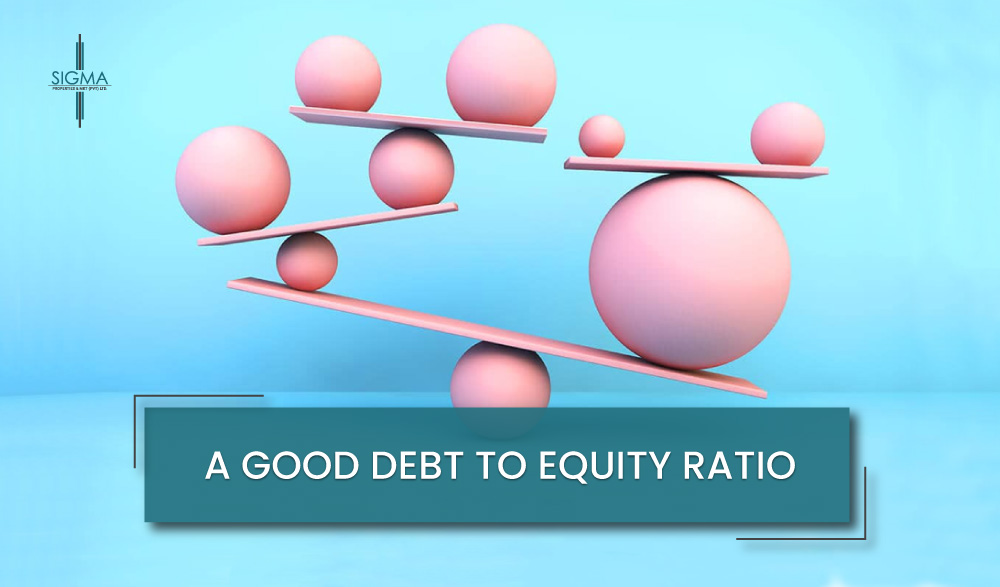A Good Debt to Equity Ratio
Growing a business necessitates financial investment. Equity and debt are the most popular ways to raise capital. Companies require money to launch goods, recruit personnel, service consumers, and expand operations when scaling. There are various ways to obtain cash, and each will have a different influence on your business and its growth rate.
What do debt and equity imply? What role do they play in your company’s financial health? This authoritative guide shall let you see what good debt to equity ratio is.
What is Debt?
Amounts owed for monies borrowed from a bank or private lender are referred to as debt. The lender agrees to lend funds to the borrower in exchange for the borrower’s agreement to repay the funds and interest on the debt at regular intervals. A company takes on an obligation to use the money for its day-to-day operations.
To borrow money from a bank or a private lender, a firm usually needs hard assets. A hard asset is a receivable for a delivered product or service recorded on the balance sheet and demonstrates to a lender that the company can repay the loan. Borrowing is more difficult for a startup firm or one that has hard assets.
What is Equity?
Equity is a stock or security that represents a company’s ownership interest. Simply put, it’s your ownership of an asset after your debt on that asset is paid off, such as a company, property, or car.
When a corporation employs equity financing, it sells shares of its stock to investors in exchange for funds. Check out this guide to equity financing for more information.
What is the Debt to Equity Ratio?
The debt to equity ratio is a measure of a firm’s financial leverage, and it shows the amount of debt and equity utilized to fund the company’s assets. It’s computed by dividing the total liabilities of a company by the entire equity of its owners. The ratio is a simple calculation that shows how much money a company has raised to run it. It’s a crucial financial statistic since it signifies its stability and ability to raise extra funds to expand.
It is essential to understand that the debt-to-equity ratio varies by industry because different businesses require varying amounts of debt and money to run and scale.
The formula for Debt to Equity Ratio
Let us look at how to use the debt to equity ratio now that we have defined it. The obligation to equity ratio is calculated using the formula below:
The two components of the procedure are:
- Total Liabilities
- Total equity
Total liabilities
A company’s total liabilities include short- and long-term debt and other obligations (e.g., bond sinking funds and deferred tax liabilities).
Total equity
It refers to the difference between total liabilities and total assets. On a company’s balance sheet, total liabilities and total assets are listed.
The Ideal Debt to Equity Ratio
Although the outstanding debt to equity ratio varies by industry, the standard agreement is it should not exceed 2.0. While certain giant corporations in fixed asset-heavy sectors (mining or manufacturing) may have ratios greater than two, this is the exception rather than the rule.
Risk is linked to the debt to equity ratio. A larger ratio indicates that the company is taking on more risk and is relying on debt to fund its expansion. When the debt to equity ratio is 2, the company gets two-thirds of its capital from debt and one-third from shareholder equity.
As a result, it borrows twice as much money as it owns (2 debt units for every equity unit). A company’s management will strive for a debt load compatible with a desirable debt to equity ratio to function without fear of defaulting on its bonds or loans.
Capital-intensive industries, such as finance and manufacturing, sometimes have higher ratios of more than 2. A high debt to equity ratio implies that a company is relying on debt to fund its expansion. Companies that invest a lot of money in their assets and operations (capital intensive companies) have a more significant debt to equity ratio. For lenders and investors, a high debt-to-equity ratio indicates a riskier investment because the company may not generate enough cash to repay its loans.
The Debt to Equity Ratio’s Impact on Business Profitability
When analyzing a company’s balance sheet, it is vital to consider the industry’s typical debt to equity ratios and those of the company’s closest competitors and the broader market.
If a company’s debt to equity ratio is 5, but the industry average is 7, it is not necessarily a sign of bad corporate management or economic danger. There are numerous additional metrics used in corporate accounting and financial research that should be considered alongside the debt to equity ratio as indicators of financial health.
You may also like: Should I buy a Rental Property or Invest in Stocks
Why Debt Capital Is Crucial
A company that completely disregards debt financing may be missing out on essential growth prospects. Debt capital has the advantage of allowing firms to leverage a modest sum of money into a much more significant sum that the firm can pay over time. It enables businesses to fund growth initiatives more quickly than they might otherwise be able to, theoretically resulting in higher profits.
A firm that does not use debt financing’s leveraging potential may be doing a disservice to its owners and shareholders by limiting the company’s capacity to earn maximum profits.
Interest paid on debt is usually tax-deductible for the business, whereas stock capital is not. Debt capital has a lower cost of capital than equity capital.
Negative Debt to Equity Ratio
If the company’s debt to equity ratio is low or close to zero, it usually suggests the company has not used debt to fund operations. Investors are unwilling to invest in a firm with a low ratio since the company isn’t reaping the potential profit or value that borrowing and expanding operations could provide.
Long Term Debt to Equity Ratio
The long-term debt to equity ratio indicates how much of a company’s assets are financed by long-term debt, such as loans. Divide long-term debt by shareholders’ equity to get the long-term debt to equity ratio.
Conclusion
The debt to equity ratio is valuable for entrepreneurs and investors since it indicates how much a company relies on debt to fund its purchases and operations. For further information, feel free to consult Sigma Properties and Marketing.



